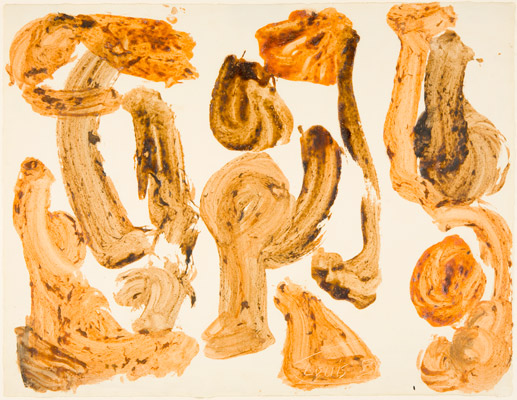Sophie Barbisan knew early on that she wanted to work in conservation. Growing up in Lyon, France, she first learned about the field at the age of 17, when an art teacher described conservation to her. As someone who loves drawing, Barbisan thought it would be exciting to shape a career around conserving paper. “Paper was just appealing to me; it was the material I preferred,” she said.
Now, as a graduate intern in the paper lab of the Straus Center for Conservation and Technical Studies at the Harvard Art Museums, Barbisan is gaining hands-on training in this specialty. The six-month internship is part of her course of study at the Institut National du Patrimoine (INP) in Paris, enabling her to complete her fourth year of a five-year master’s degree program in paper and parchment conservation.
The competitive INP is one of just two programs in France for paper conservation; only two or three students graduate from INP’s paper and parchment conservation program each year. An offer of admission is contingent upon passing an intense entry exam that tests six different areas of expertise. One element of the testing, for instance, requires applicants to spend five days reproducing two works of art, down to any stains or imperfections in the work.
All students in INP’s program are required to undertake an international internship; Barbisan’s time at the Straus Center, under the mentorship of Penley Knipe, the Philip and Lynn Straus Conservator of Works of Art on Paper, complements her previous internships. She has interned at the Louvre and the Musée des Beaux-Arts in Orléans, and has worked on smaller preservation projects with other students at various museums throughout France. Barbisan’s time at the Straus Center, however, feels profoundly different from those experiences.
“In France, I don’t think that we all fully understand yet the power of collaboration between different professions,” Barbisan said. “What is great about the Straus Center is that there is an analytical lab and a conservation lab working together, in a building that has been designed for collaboration. Having the two facilities within the same institution makes a big difference.”
Besides learning about different conservation methods, including paper washing techniques and a method for filling losses in deteriorated works, Barbisan has diligently completed numerous treatments, including washing a Rembrandt print, surface cleaning and reducing stains on a Gropius architectural drawing, and treating two Guido Reni prints.
Barbisan has also been working on a project to examine two untitled 1953 works by American artist Morris Louis (1988.411 and 1988.412). “After that year Morris Louis stopped drawing completely,” she said. “We were interested in discovering the media used in these works, because they were identified as gouache drawings [both are considered drawings because their support is paper], but there are little white accretions on the surface of the paint, and gouache doesn’t do that.”
Barbisan and Georgina Rayner, the Andrew W. Mellon Postdoctoral Fellow in Conservation Science, are analyzing whether additional materials such as acrylic paint and egg were used in Louis’s two works. They will also try to reproduce the art in order to better hypothesize about which tool(s) the famously secretive Louis used. “I really look forward to doing the analysis and being able to understand what it is all about,” Barbisan said. She plans to present some of her findings to colleagues at Harvard in May.
“We are delighted to have Sophie in the lab with us,” Knipe said. “Not only is she a very hard worker with excellent hand skills, but she also exposes us to other approaches to paper conservation. It has been really interesting to learn how French conservators are trained as well.”
Barbisan’s time at the Straus Center represents her first experience living and working abroad, which she’s enjoying—even after she experienced a blizzard on her first day, and many subsequent snowstorms afterward. “Everyone kept apologizing about all the snow,” Barbisan said, “but I didn’t mind it.” She’s also been able to take advantage of Harvard’s academic resources, and spent the spring semester auditing a class on Japanese woodblock prints, taught by Yukio Lippit, professor of the history of art and architecture.
“I think it is important to have a good knowledge of art history,” Barbisan said, “because it can change the way you are going to conserve a print.”


